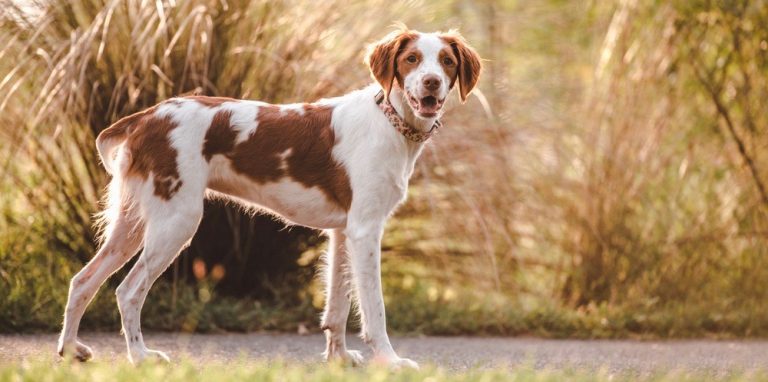Scottish Terrier Weight Chart – Size & Growth Chart
Scottish Terriers are compact and small with short legs. Their interesting development makes it necessary to have a Scottish Terrier growth chart, so you can track their progress.
They have a sturdy build with long heads that many view as disproportionate to their body size.
They have coats that are weather-resistant, hard, and wiry, but they move around on short heavy legs.
Their erect tail and ears along with that piercing expression are some of their characteristic features. Scottish Terriers are powerful dogs in a small package as evidenced by their dignified confidence.
They have acquired the nickname ‘the Die Hard’ because of their persistence, so training is necessary at a young age to instill acceptable behaviors in them.
When Is A Scottish Terrier Fully Grown?
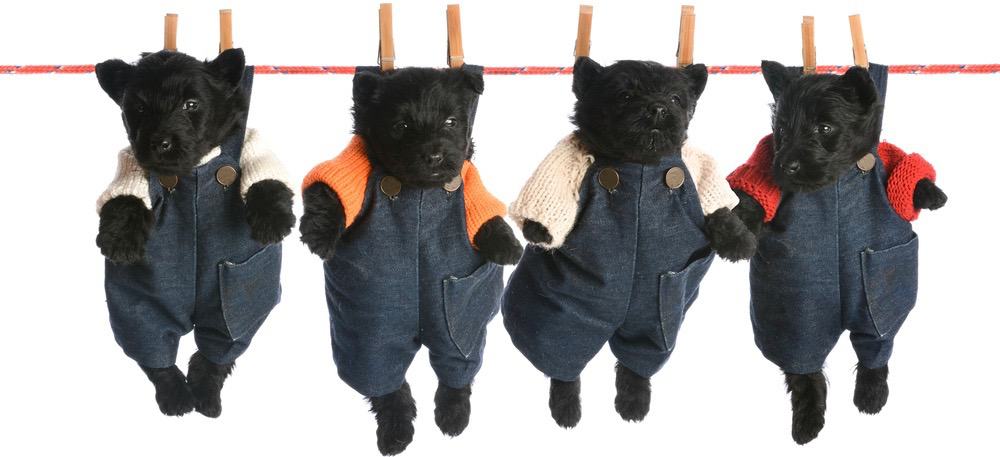
With most dog breeds, it is difficult to determine when they will be fully grown because no two dogs are the same.
Their rate of growth will depend on a variety of factors such as nutrition, exercise level, and genetics. This will be the case even if they are raised in the same household.
For Scottish Terriers, you can expect most puppies to reach full-grown status when they are at the one-year mark.
Usually, these dogs are around 8.5 to 10 kg when they reach adulthood. Even though Scottish Terriers are pint-size puppies they are known to have a sturdy frame.
At 12 months they will stop growing in height, but they may still gain weight through muscles and fat. This is why it is important to adjust their diet after adulthood major development has taken place.
The first six months of a Scottish Terrier’s life will see the most rapid growth. Males are slightly larger than females, and they also reach adulthood a bit faster.
Scottish Terrier Weight Chart
The following Scottish Terrier growth chart will give you an estimation of you are Scottish Terrier’s weight so that you can track their progress.
That said, you may find yourself in a position where your dog has a higher or lower weight than what we have stated in the chart.
This is no cause for real concern unless this weight differentiation is accompanied by other noticeable signs that your dog is overweight or underweight.
Keep in mind that dogs grow at different rates based on the food they eat, their exercise level, and simple genetics.
Therefore, you should not expect your dog to match perfectly with all the weight measurements we have given at all stages of your dog’s development.
If you notice that your Scottish terrier is overweight, and you also cannot feel his ribs when you run your hands along his rib cage, then he is probably overweight.
On the other hand, if he weighs less than the weight on the charts, and you can feel all of his ribs outlined without a single layer of fat, then he may be underweight.
It is also advised that you check with your veterinarian who can give you a definitive answer about the state of his health.
Use this chart as a guide and simply ascertain his exact age on the left column. Then you can look at the weight that coincides with that age.
Scottish Terrier Puppy Weight Chart
| Age | Weight lbs | Weight kg |
|---|---|---|
| 1 Months | 2.5 lbs | 1.1 kg |
| 2 Months | 5.5 lbs | 2.5 kg |
| 3 Months | 8 lbs | 3.6 kg |
| 4 Months | 10.7 lbs | 4.8 kg |
| 5 Months | 13.25 lbs | 6 kg |
| 6 Months | 15.5 lbs | 7 kg |
| 7 Months | 17.5 lbs | 7.8 kg |
| 8 Months | 18.75 lbs | 8.4 kg |
| 9 Months | 19.75 lbs | 8.9 kg |
| 10 Months | 20.5 lbs | 9.2 kg |
| 11 Months | 21 lbs | 9.4 kg |
| 12 Months | 21.5 lbs | 9.7 kg |
Scottish Terrier Growth Chart – What To Expect

Birth – 2 Weeks
Scottish Terriers are born blind and are quite tiny. they are usually born into litter sizes of 1-6 puppies.
Expect that they will be reliant on their mothers to keep them warm and feed them. Allow your puppy to have quality time with his mother uninterrupted by you unless absolutely necessary.
It is okay to take on the responsibility of a puppy that is abandoned by his mother.
You need to make sure that he is kept warm and provide a canine milk replacement so that he can access the necessary nourishment and continue to develop.
3 Weeks – 12 Weeks
Your Scottish Terrier will undergo massive changes as he continues to develop. He will need to be weaned from his mother’s milk to solid foods.
This transition should be handled with the utmost care because nutrition is crucial to growth and at this stage, your Scottish Terrier needs proper nutrition to meet developmental milestones.
Make sure that the food has the right texture which should be like mashed potatoes or a thick soup.
If you are feeding him kibble, then you need to add moisture to it’s so that it is more palatable to him. At the end of this stage, your Scottish Terrier should be about 3.5 to 4.3 kg for females add 3.7 to 4.3 kg for males.
4 Months – 9 Months
Your Scottish Terrier should be entering the first heat stage during this time. Usually they spend about 10 days in heat and go into heat about twice per year.
Expect that your Scottish Terrier may display behaviors like trying to escape from the fence or even running away. You may also notice that your dog has a swollen vulva or a bloody discharge.
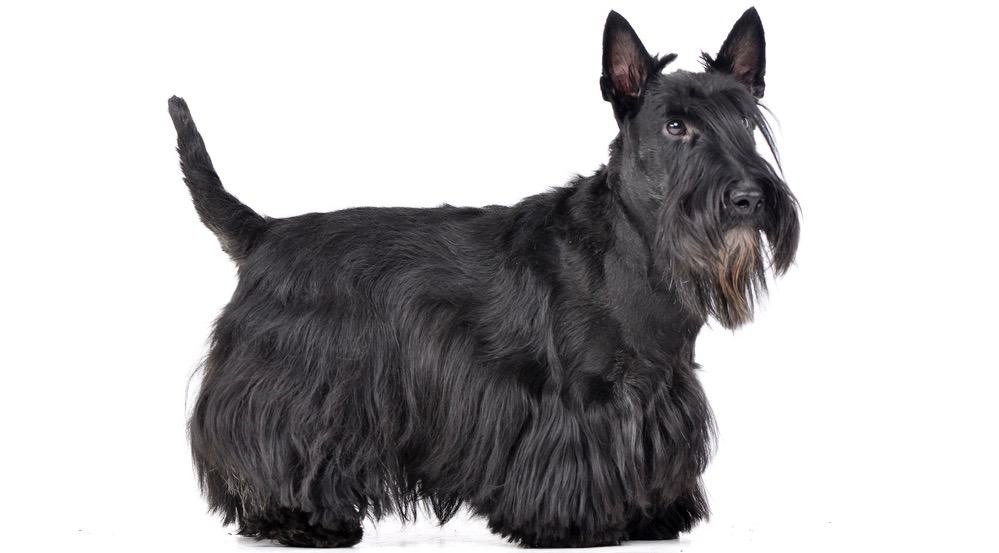
In the middle of this stage, at about six months, your Scottish Terrier should be about 6.3 – 7.7 Kg on average for females. For males, you can expect a weight of 6.7 to 7.8 kg.
10 Months – 18 Months
As we have stated, Scottish Terriers enter adulthood when they reach the one-year mark.
However, some of them continue to gain weight after this, but their height remains relatively the same. Your Scottish Terrier should between 8 and 9.9 kg for females and 8.5 to 10 kg for males.
Adult
As an adult, your Scottish Terrier will still have playful tendencies even though this tends to slow down throughout their lives.
Your Scottish Terrier will need high quality dog food to continue to develop. Although he would not need more calories, than he did during his development.
You can also reduce the amount of protein he is being fed. 1 – 1.5 cups of high quality kibble is recommended.
How Big Do Scottish Terriers Get?
If you would like to predict your Scottish Terriers ultimate size, then you can refer to the growth chart within this article. It is quite a simple way to make predictions based on your dog’s age and weight now.
Alternatively, you can find information on your dog’s parents. Most breeders are forthcoming with this information.
Find out the size of your dog’s parents because this is the most accurate way of predicting his ultimate size. Dogs are usually the average size of both parents, because of genetics.
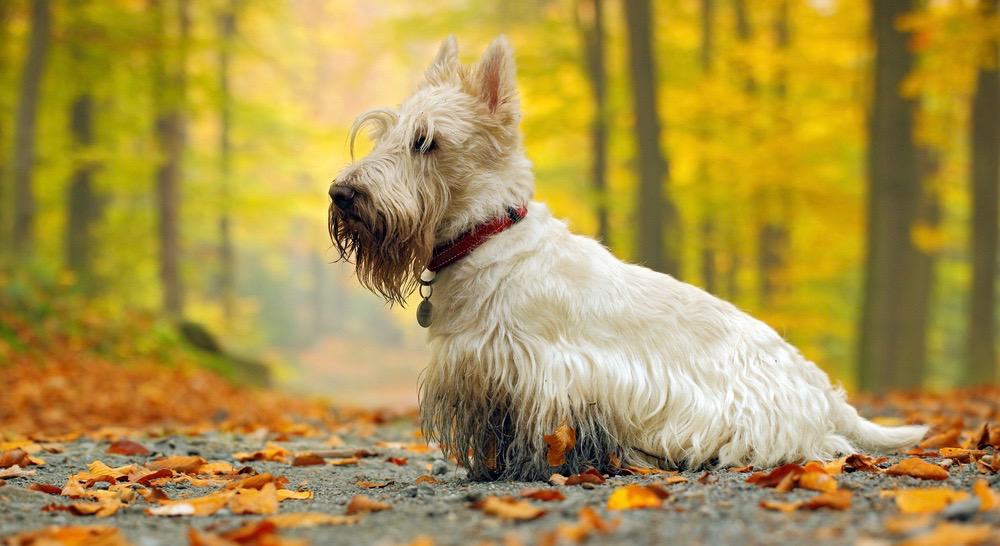
Another method you can use is examining your dog and looking for signs that his paws are larger in proportion to the rest of his body.
This is because when dogs have more growing to complete they usually have paws that are larger in comparison to the rest of their body.
And their head is also bigger as well, but Scottish Terriers have naturally larger heads, so it would not be wise to use their head in this case.
You can also try a DNA test because it is helpful and mapping your dog’s genealogy and making sure that there are no other breeds in his ancestry which may throw off calculations.
Will Neutering/Spaying My Scottish Terrier Affect His Growth?
Researchers and animal experts disagree about the effects of neutering and spaying a dog. But what is clear, is that there are both advantages and disadvantages to either option.
Neutering or spaying your dog can affect the growth of your dog because his hormones effects the growth rate.
Some dogs end up with joint problems when they are spayed too early. This is why Scottish Terriers should not be spayed or neutered before they have reached 12 months.
After their growth is completed it is safe to have this procedure done.
There are also clear advantages of spaying and neutering your dog like eliminate the risk of unwanted pregnancy.
Your dog may also avoid harmful cancers and other conditions because they are spayed or neutered.
Scottish Terrier Height Chart
It is not difficult to measure your Scottish Terriers height. You simply need a measuring tape, a pencil and a carpenter’s level so that the measurement can be accurate.
Get your Scottish Terrier to cooperate for this measurement to be successful.
Place your Scottish Terrier against a wall, but he needs to be standing straight without looking sideways or slouching. Measure his height by the withers which is the highest points of his shoulder blades.
Next, grab your carpenter’s level and place it at the height of his withers. Extend this height to the end of the wall and mark this exact spot.
Measure this spot all the way to the floor and this is your Scottish Terriers height. Most of them stand at 10 ft 11 inches tall.
Miniature Schnauzer vs Scottish Terrier Size
Scottish Terriers are small dogs about 10 inches tall. Males usually weigh between 19 and 22 lb while females weigh 18 to 21 lb.
According to the American Kennel Club if your dog is smaller than a miniature Scottish Terrier they will not be recognized. Scottish Terriers share a similar size to miniature schnauzers.
Miniature Schnauzers are about 12 to 14 inches tall which makes them a bit taller than Scottish Terriers. They usually weigh between 11 and 20 lb which makes them a bit lighter than Scottish Terriers.
If you were to compare standard schnauzers to Scottish Terriers the standard schnauzers would be larger. Obviously giant schnauzers would be a lot larger than Scottish Terriers.
Factors That Affect Scottish Terrier Growth
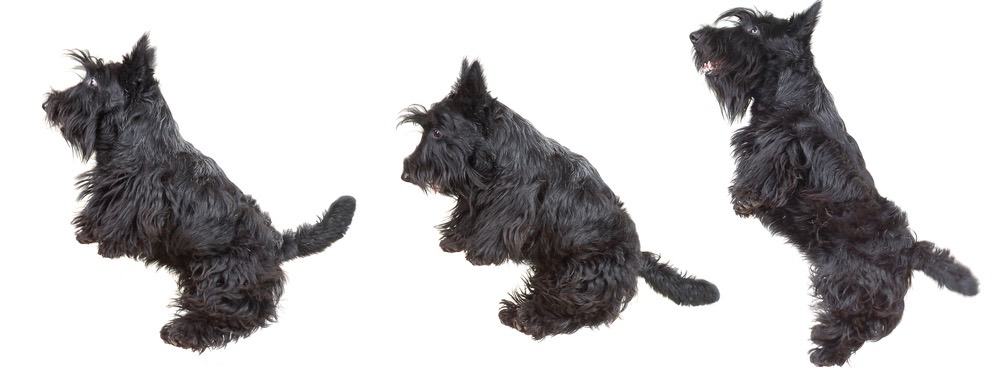
Genetics & Gender
Scottish Terrier’s genetics play a major role in their growth and development. Genes that are passed down through generations affect your Scottish Terrier today.
This is why dogs are usually the average size of both parents. They inherit diseases and conditions their parents had.
Gender plays a role because males are slightly larger than females on average. Females also tend to attain adulthood faster because they have last growing to do.
Nutrition
Scottish Terriers need to be fed high quality dog food so that they can develop properly. If a Scottish Terrier is not receiving proper nutrition there can be a myriad of diseases and conditions that impact his health.
A clear sign that your Scottish Terrier is receiving proper nutrition is when his coat is even with no flaky, dry skin or irritation.
His eyes will also be bright, and he will not be chewing and itching on himself. He should have at least 20% protein when he is an adult.
Physical Activity & Health
When it comes to physical activity, you need to keep in mind that Scottish Terriers have short legs. However, they do enjoy a lot of exercise, but you should be careful about the exercise they engage in.
For instance, Scottish Terriers do not make good jogging companions. However, a short walk should be perfectly fine, or you can take them to a park and play fetch.
They are high-energy dogs and they enjoy play time. You can also play tug with their favorite toy which provides a bit of activity.
What If My Scottish Terrier Is Not The Right Weight
You can tell if your Scottish Terrier is overweight or underweight by observing him closely. Scottish terriers have a considerable amount of fur, so it may be difficult to tell if they are not the right we’d simply by looking at them.
The best way to tell if they are overweight or underweight is running your hands along their rib cage. By doing this, you can tell a few things.
Fat usually settles along your dog stomach area, so if you do not feel any fat at all but protruding ribs, then he may be underweight.
But if you cannot feel ribs at all, and all you feel is fat, then he may be overweight. Check with your veterinarian to make sure he is in optimal health.
Scottish Terrier Genetics And Common Health Problems
In general, Scottish Terriers are healthy, but they do tend to suffer from a few conditions. These are:
Scottie cramp – This disorder commonly affects Scottish Terriers, but it is considered to be harmless. It usually happens when your Scottish Terrier is overstimulated or stressed like in the middle of a fight, mating or exercise.
Von Willebrand’s disease – This is a blood disorder that is inherited and interferes with your Scottie’s blood clotting ability.
Symptoms of this disease include, breeding in the intestines, stomach, gums or nose. Unfortunately there is no cure for this disease, but some dogs are able to have blood transfusion.
Craniomandibular osteopathy – This condition impacts your Scottish Terrier’s skull bones which become irregularly enlarged.
This condition usually manifests itself when your dog is between four and eight months old. You may notice that he has a swollen jaw and glands .
Patellar luxation – This is a common problem for small dogs like Scottish Terriers. It occurs when the kneecap is dislocated at the join leading to pain.
Final Words
You need to regularly groom your Scottish Terrier because they have a double coat and their hair is thick and wiry.
Grooming should start from a young age so that they become accustomed and do not give you a hard time. Once per month is a reasonable frequency.
Scottish Terriers also need to be trained, but their training sessions should be no longer than 15 minutes at a given time.
This is an intelligent breed, so they do not respond to training when they are bored.
Because they get bored easily, you should switch up the training exercises. They are always testing their boundaries to see if they can get away with unapproved behavior.





